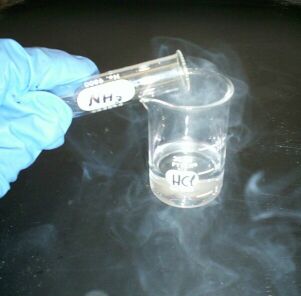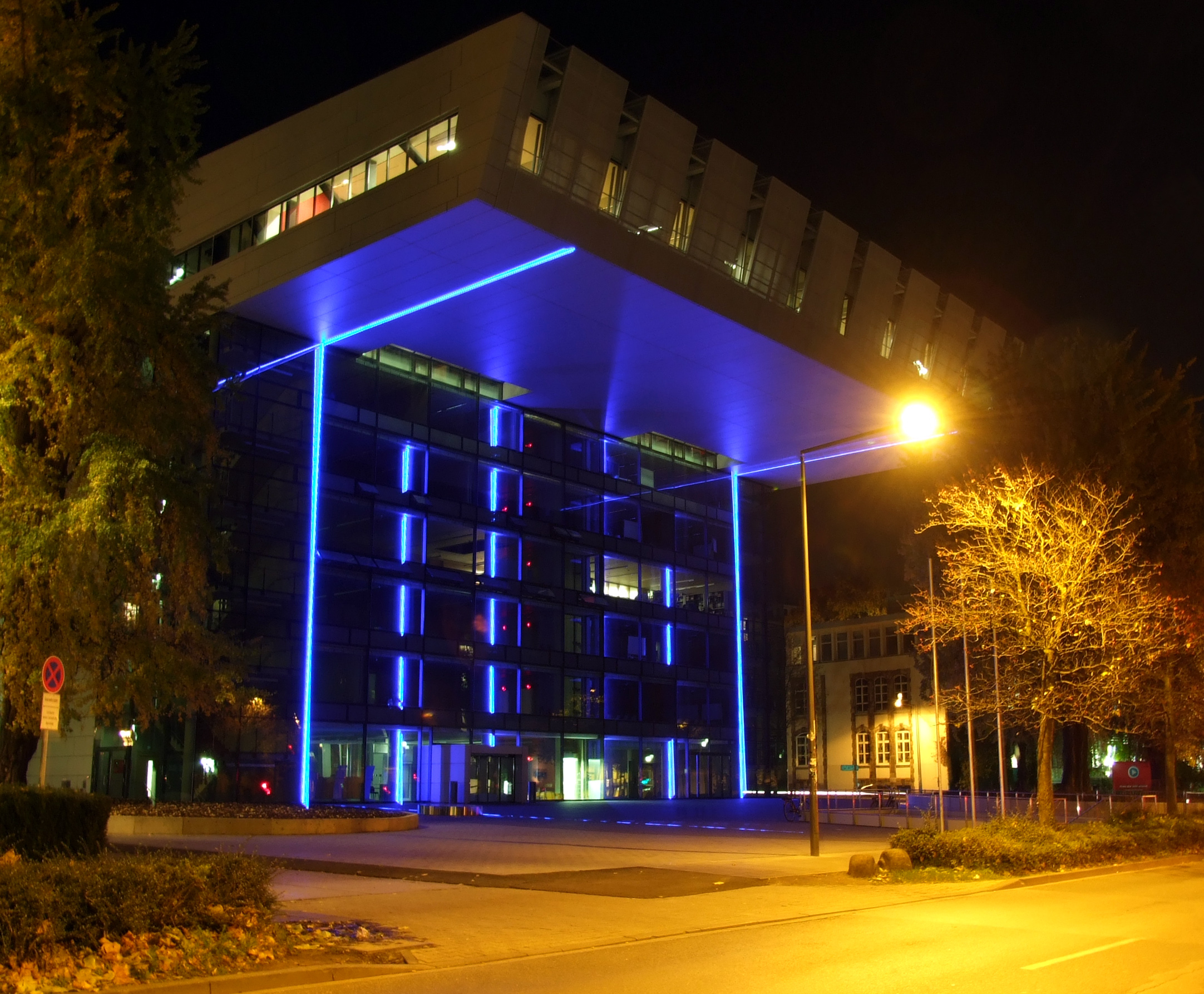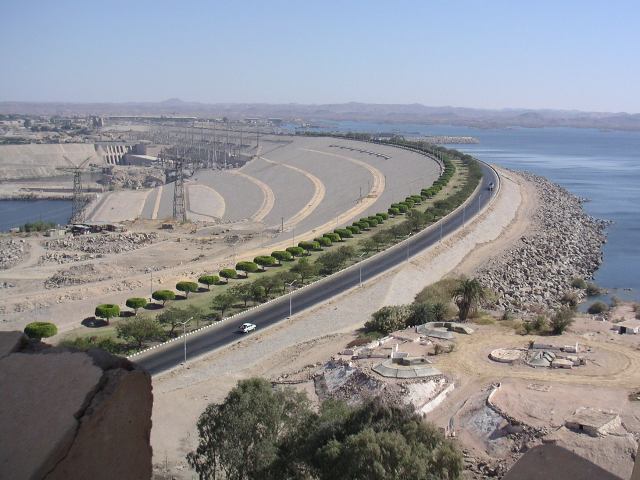|
René Peters (chemist)
René Peters (born August 26, 1971, in Simmerath) is a German chemist and since 2008 Professor of Organic Chemistry at the University of Stuttgart. Life and work Peters studied chemistry at RWTH Aachen University from 1992 to 1997 and subsequently received his doctorate under Dieter Enders until 2000. This was followed by a stay as a postdoc at Harvard University with Yoshito Kishi as a DAAD scholarship holder. Between 2001 and 2004 he worked as a process research chemist at F. Hoffmann-La Roche LTD (Basel). From 2004 to 2008, Peters was an assistant professor at ETH Zurich. Since 2008 he has been Professor of Organic Chemistry at the University of Stuttgart. The research team led by Prof. Peters is one of the leading groups in the field of cooperative asymmetric catalysis. The research is centered around the development of bi- and polyfunctional catalysts whose mode of action is inspired by enzymes, although the structure of the artificial catalysts is much simpler than those ... [...More Info...] [...Related Items...] OR: [Wikipedia] [Google] [Baidu] |
Simmerath
Simmerath () is a municipality in the Aachen (district), district of Aachen, in North Rhine-Westphalia, Germany. It is located approximately 20 km south-east of Aachen, near the border to Belgium. The administrative area was expanded in 1972 and includes the following localities: * Dedenborn * Eicherscheid * Einruhr * Erkensruhr * Hammer * Hirschrott * Huppenbroich * Kesternich * Lammersdorf * Paustenbach * Rollesbroich * Rurberg * * * * Witzerath * Woffelsbach Gallery File:Lammersdorf, die katholische Pfarrkirche Dm128 in straatzicht foto3 2016-09-09 12.33.jpg, Lammersdorf, catholic church in the street File:Einruhr, die Sankt Nikolaus Kirche in dorpszicht foto6 2015-04-16 12.23.jpg, Einruhr, church of St. Nicholas in the village File:Bij Einruhr, die Rur foto5 2016-09-09 14.24.jpg, near Einruhr, river Rur (river), Rur File:Paustenbach, straatzicht Paustenbacher Strasse foto8 2016-09-09 12.46.jpg, Paustenbach, view of a street References External links ... [...More Info...] [...Related Items...] OR: [Wikipedia] [Google] [Baidu] |
Ammonium
Ammonium is a modified form of ammonia that has an extra hydrogen atom. It is a positively charged (cationic) polyatomic ion, molecular ion with the chemical formula or . It is formed by the protonation, addition of a proton (a hydrogen nucleus) to ammonia (). Ammonium is also a general name for positively charged (protonated) substituted amines and quaternary ammonium cations (), where one or more hydrogen atoms are replaced by Organic compound, organic or other groups (indicated by R). Not only is ammonium a source of nitrogen and a key metabolite for many living organisms, but it is an integral part of the global nitrogen cycle. As such, human impact in recent years could have an effect on the biological communities that depend on it. Acid–base properties The ammonium ion is generated when ammonia, a weak base, reacts with Brønsted–Lowry acid–base theory, Brønsted acids (proton donors): : The ammonium ion is mildly acidic, reacting with Brønsted bases to return ... [...More Info...] [...Related Items...] OR: [Wikipedia] [Google] [Baidu] |
RWTH Aachen University Alumni
RWTH Aachen University (), in German ''Rheinisch-Westfälische Technische Hochschule Aachen'', is a German public research university located in Aachen, North Rhine-Westphalia, Germany. With more than 47,000 students enrolled in 144 study programs, it is the second largest technical university in Germany. RWTH Aachen in 2019 emerged from the final of the third federal and state excellence strategy. The university will be funded as a university of excellence for the next seven years. RWTH Aachen was already part of the federal and state excellence initiative in 2007 and 2012. Since 2007, RWTH Aachen has been continuously funded by the Deutsche Forschungsgemeinschaft, DFG and the German Council of Science and Humanities as one of eleven (previously nine) German German Universities Excellence Initiative, Universities of Excellence for its future concept ''RWTH 2020: Meeting Global Challenges'' and the follow-up concept ''The Integrated Interdisciplinary University of Science and ... [...More Info...] [...Related Items...] OR: [Wikipedia] [Google] [Baidu] |
German Organic Chemists
German(s) may refer to: * Germany, the country of the Germans and German things **Germania (Roman era) * Germans, citizens of Germany, people of German ancestry, or native speakers of the German language ** For citizenship in Germany, see also German nationality law **Germanic peoples (Roman era) *German diaspora * German language * German cuisine, traditional foods of Germany People * German (given name) * German (surname) * Germán, a Spanish name Places * German (parish), Isle of Man * German, Albania, or Gërmej * German, Bulgaria * German, Iran * German, North Macedonia * German, New York, U.S. * Agios Germanos, Greece Other uses * German (mythology), a South Slavic mythological being * Germans (band), a Canadian rock band * "German" (song), a 2019 song by No Money Enterprise * ''The German'', a 2008 short film * "The Germans", an episode of ''Fawlty Towers'' * ''The German'', a nickname for Congolese rebel André Kisase Ngandu See also * Germanic (disambiguatio ... [...More Info...] [...Related Items...] OR: [Wikipedia] [Google] [Baidu] |
Academic Staff Of The University Of Stuttgart
An academy (Attic Greek: Ἀκαδήμεια; Koine Greek Ἀκαδημία) is an institution of tertiary education. The name traces back to Plato's school of philosophy, founded approximately 386 BC at Akademia, a sanctuary of Athena, the goddess of wisdom and Skills, skill, north of Ancient Athens, Athens, Greece. The Royal Spanish Academy defines academy as scientific, literary or artistic society established with public authority and as a teaching establishment, public or private, of a professional, artistic, technical or simply practical nature. Etymology The word comes from the ''Academy'' in ancient Greece, which derives from the Athenian hero, ''Akademos''. Outside the city walls of Athens, the Gymnasium (ancient Greece), gymnasium was made famous by Plato as a center of learning. The sacred space, dedicated to the goddess of wisdom, Athena, had formerly been an olive Grove (nature), grove, hence the expression "the groves of Academe". In these gardens, the philos ... [...More Info...] [...Related Items...] OR: [Wikipedia] [Google] [Baidu] |
1971 Births
* The year 1971 had three partial solar eclipses (Solar eclipse of February 25, 1971, February 25, Solar eclipse of July 22, 1971, July 22 and Solar eclipse of August 20, 1971, August 20) and two total lunar eclipses (February 1971 lunar eclipse, February 10, and August 1971 lunar eclipse, August 6). The world population increased by 2.1% this year, the highest increase in history. Events January * January 2 – 1971 Ibrox disaster: During a crush, 66 people are killed and over 200 injured in Glasgow, Scotland. * January 5 – The first ever One Day International cricket match is played between Australia and England at the Melbourne Cricket Ground. * January 8 – Tupamaros kidnap Geoffrey Jackson, British ambassador to Uruguay, in Montevideo, keeping him captive until September. * January 9 – Uruguayan president Jorge Pacheco Areco demands emergency powers for 90 days due to kidnappings, and receives them the next day. * January 12 – The landmark United States televis ... [...More Info...] [...Related Items...] OR: [Wikipedia] [Google] [Baidu] |
Living People
Purpose: Because living persons may suffer personal harm from inappropriate information, we should watch their articles carefully. By adding an article to this category, it marks them with a notice about sources whenever someone tries to edit them, to remind them of WP:BLP (biographies of living persons) policy that these articles must maintain a neutral point of view, maintain factual accuracy, and be properly sourced. Recent changes to these articles are listed on Special:RecentChangesLinked/Living people. Organization: This category should not be sub-categorized. Entries are generally sorted by family name In many societies, a surname, family name, or last name is the mostly hereditary portion of one's personal name that indicates one's family. It is typically combined with a given name to form the full name of a person, although several give .... Maintenance: Individuals of advanced age (over 90), for whom there has been no new documentation in the last ten ... [...More Info...] [...Related Items...] OR: [Wikipedia] [Google] [Baidu] |
Metallacycle
In organometallic chemistry, a metallacycle is a derivative of a carbocyclic compound wherein a metal has replaced at least one carbon center; this is to some extent similar to heterocycles. Metallacycles appear frequently as reactive intermediates in catalysis, e.g. olefin metathesis and alkyne trimerization. In organic synthesis, directed ortho metalation is widely used for the functionalization of arene rings via C-H activation. One main effect that metallic atom substitution on a cyclic carbon compound is distorting the geometry due to the large size of typical metals. Nomenclature Typically, metallacycles are cyclic compounds with two metal carbon bonds. Many compounds containing metals in rings are known, for example chelate rings. Usually, such compounds are not classified as metallacycles, but the naming conventions are not rigidly followed. Within the area of coordination chemistry and supramolecular chemistry, examples include metallacrowns, metallacryptands, metall ... [...More Info...] [...Related Items...] OR: [Wikipedia] [Google] [Baidu] |
Catalysis
Catalysis () is the increase in rate of a chemical reaction due to an added substance known as a catalyst (). Catalysts are not consumed by the reaction and remain unchanged after it. If the reaction is rapid and the catalyst recycles quickly, very small amounts of catalyst often suffice; mixing, surface area, and temperature are important factors in reaction rate. Catalysts generally react with one or more reactants to form intermediates that subsequently give the final reaction product, in the process of regenerating the catalyst. The rate increase occurs because the catalyst allows the reaction to occur by an alternative mechanism which may be much faster than the noncatalyzed mechanism. However the noncatalyzed mechanism does remain possible, so that the total rate (catalyzed plus noncatalyzed) can only increase in the presence of the catalyst and never decrease. Catalysis may be classified as either homogeneous, whose components are dispersed in the same phase (usual ... [...More Info...] [...Related Items...] OR: [Wikipedia] [Google] [Baidu] |
Hydrogen Bond
In chemistry, a hydrogen bond (H-bond) is a specific type of molecular interaction that exhibits partial covalent character and cannot be described as a purely electrostatic force. It occurs when a hydrogen (H) atom, Covalent bond, covalently bonded to a more Electronegativity, electronegative donor atom or group (Dn), interacts with another electronegative atom bearing a lone pair of electrons—the hydrogen bond acceptor (Ac). Unlike simple Dipole–dipole attraction, dipole–dipole interactions, hydrogen bonding arises from charge transfer (nB → σ*AH), Atomic orbital, orbital interactions, and quantum mechanical Delocalized electron, delocalization, making it a resonance-assisted interaction rather than a mere electrostatic attraction. The general notation for hydrogen bonding is Dn−H···Ac, where the solid line represents a polar covalent bond, and the dotted or dashed line indicates the hydrogen bond. The most frequent donor and acceptor atoms are nitrogen (N), oxyg ... [...More Info...] [...Related Items...] OR: [Wikipedia] [Google] [Baidu] |
Betaine
A betaine () in chemistry is any neutral chemical compound with a positively charged cationic functional group that bears no hydrogen atom, such as a Quaternary ammonium cation, quaternary ammonium or phosphonium cation (generally: Onium compounds, onium ions), and with a negatively charged functional group, such as a carboxylate group that may not be adjacent to the cationic site. Historically, the term was reserved for trimethylglycine (TMG), which is involved in methylation reactions and detoxification of homocysteine. This is a modified amino acid consisting of glycine with three methyl groups serving as methyl donor for various metabolic pathways. Pronunciation The pronunciation of the compound reflects its origin and first isolation from sugar ''beets'' (''Beta vulgaris'' subsp. ''vulgaris''), and does not derive from the Greek letter beta (β). It is commonly pronounced ''beta-INE'' or ''BEE-tayn''. Glycine betaine The original betaine, ''N'',''N'',''N''-trimethyl ... [...More Info...] [...Related Items...] OR: [Wikipedia] [Google] [Baidu] |
Pyridinium
Pyridinium refers to the cation . It is the conjugate acid of pyridine. Many related cations are known involving substituted pyridines, e.g. picolines, lutidines, collidines. They are prepared by treating pyridine with acids. As pyridine is often used as an organic base in chemical reactions, pyridinium salts are produced in many acid-base reactions. Its salts are often insoluble in the organic solvent, so precipitation of the pyridinium leaving group complex is an indication of the progress of the reaction. Pyridinium cations are aromatic, as determined through Hückel's rule. They are isoelectronic with benzene. ''N''-Alkylpyridinium cations When the acidic proton is replaced by alkyl, the compounds are called ''N''-alkylpyridinium. A simple representative is ''N''-methylpyridinium (). These pyridinium intermediates have been used as electrophiles in synthetic organic chemistry to build dearomatized congeners called dihydropyridines, as demonstrated in one example from Smit ... [...More Info...] [...Related Items...] OR: [Wikipedia] [Google] [Baidu] |





